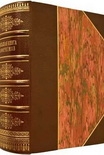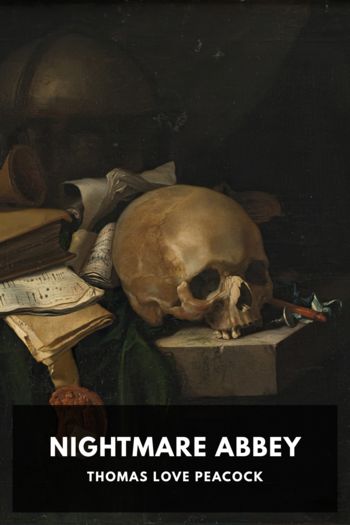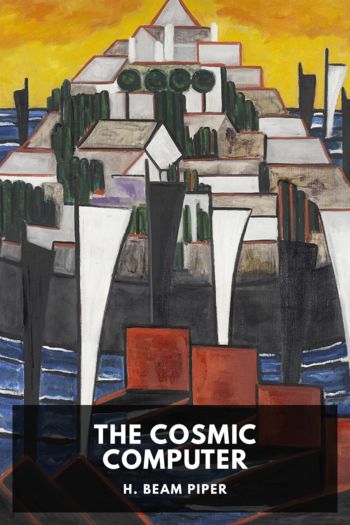Gluck, Diana Souhami [good novels to read in english txt] 📗

- Author: Diana Souhami
Book online «Gluck, Diana Souhami [good novels to read in english txt] 📗». Author Diana Souhami
For The Gluck Room at The Fine Art Society she designed an interior of panelled bays and pilasters which echoed the steps of the frames. All were painted white with three undercoats and one finishing coat. An unfortunate Mr Lawrence of The Display Centre Regent Street got the contract to construct the panelling. He had built window displays and exhibition stands for Constance Spry and it was on her recommendation that Gluck used him. She kept an inventory of his firm’s misdemeanours. They were supposed to arrive on the afternoon of Saturday 29 October to set up the room, but the lorry driver went to a football match so did not turn up until 8.15 in the evening. He had no screws, no dust sheets, the pilasters were still being made, the carpenter was not there and as the lorry was open it had rained all over the panels which had to have an extra coat of paint.
Mr Lawrence had given Gluck a verbal estimate of £100 for the job. As all work for her infinitely exceeded any estimate, he finally sent in a bill for £165 saying in a restrained if disgruntled way that the sum represented no profit for him, that she had shown no appreciation of his efforts and had taken all the credit. She stalled about paying him anything. Edward Maufe and Constance Spry interceded and she got the service, gratis, of a surveyor who inspected the work and Lawrence’s accounts. The surveyor negotiated a compromise whereby Gluck paid £125 and let Lawrence salvage the wood used in the structure after the show was over. Lawrence wrote Gluck a conciliatory letter (19 January 1933) regretting
that there should have been any cause for misunderstanding or friction. We make bold to say that we shall hope to again have the opportunity of working for you, provided of course that we should have a definite and firm contract for anything which is to be undertaken.
She did not reply.
The room was much admired. Syrie Maugham wrote (5 November 1932) ‘Just a line to tell you how much I loved your show.… The pictures were lovely in themselves and superbly shown. I have never seen an exhibition so beautifully arranged.’ The Times thought it offered a solution to the common difficulty of ‘how to hang pictures in the typically “modern” interior, with its severe lines and plane surfaces.’ The Sunday Times said that the exhibition ‘reveals an architect as well as a painter’ and believed that the paintings were actually let into the panelling.
The guests at her private view were grander and richer than in the twenties. The Mount Temples were there, Syrie Maugham, Cecil Beaton, Lord Portland, Lord Vernon, Oliver Hill, Norman Wilkinson, Ernest Thesiger, Arthur Watts, the Oppenheimers and Nesta Obermer. Queen Mary called in for half an hour on 9 November. Hers was not an entirely impromptu visit. The Meteor, known to the Queen for her considerable funding of charitable works and staunch admiration of all things Royal, had forged the way: ‘Knowing how fond her Majesty is of flower paintings,’ she wrote to Sir Harry Verney, The Queen’s Private Secretary two months before the show,
I wonder if the Queen, in her busy life, could possibly find the time to visit an exhibition being held by my daughter at the Fine Art Society, New Bond Street, from November 1st until the 19th. Perhaps you know my daughter paints under the name of ‘Gluck’. Should her Majesty honour me by visiting the Exhibition, I am sure my deep gratitude and sincere happiness will be beyond expression …
Sir Harry replied that November was a very busy month for The Queen, but that Her Majesty was delighted to make a note of the dates of Mrs Gluckstein’s daughter’s exhibition and if she had a spare half-hour,
I know it will give her great pleasure to see some of your daughter’s beautiful work. You must not, however, count on this because, as you will readily understand, it is not easy for The Queen to fit in her innumerable engagements in the short time at her disposal.
Dear Sir Harry
… Will you please thank her Majesty for her gracious consideration in making a note of the dates of my daughter’s Exhibition and also convey to her my most grateful thanks for her kindness towards me, always in my work, and this time in what is a really personal matter. I do appreciate that her Majesty’s many duties will make a visit very difficult, but I feel highly honoured that she is considering the possibility. I shall hope that fortune may smile on us by giving that extra half hour to her Majesty that she may spend even a few moments at the Exhibition …2
‘I would give a lot to know’, mused the London Letter of the Portsmouth Evening News on 10 November 1932,
whether Queen Mary addressed her as ‘Miss Gluck’ or ‘Gluck’. For Gluck is an artist of the Bohemian kind, wears an Eton crop, affects a masculine type of dress and tells you she dislikes the prefix ‘Miss’ and prefers plain ‘Gluck’. Queen Mary was accompanied by Lady Joan Verney and Sir Harry Verney, and spent a good deal of time inspecting the whimsical pictures on the wall. They are astonishingly clever and not a bit conventional.
Queen Mary apparently gave scrupulous attention to all but one of Gluck’s pictures. She surveyed them through her lorgnette. When she came to 25, ‘The Seventh Veil’, her lorgnette swooped in an arc of dismissal as she went on





Comments (0)